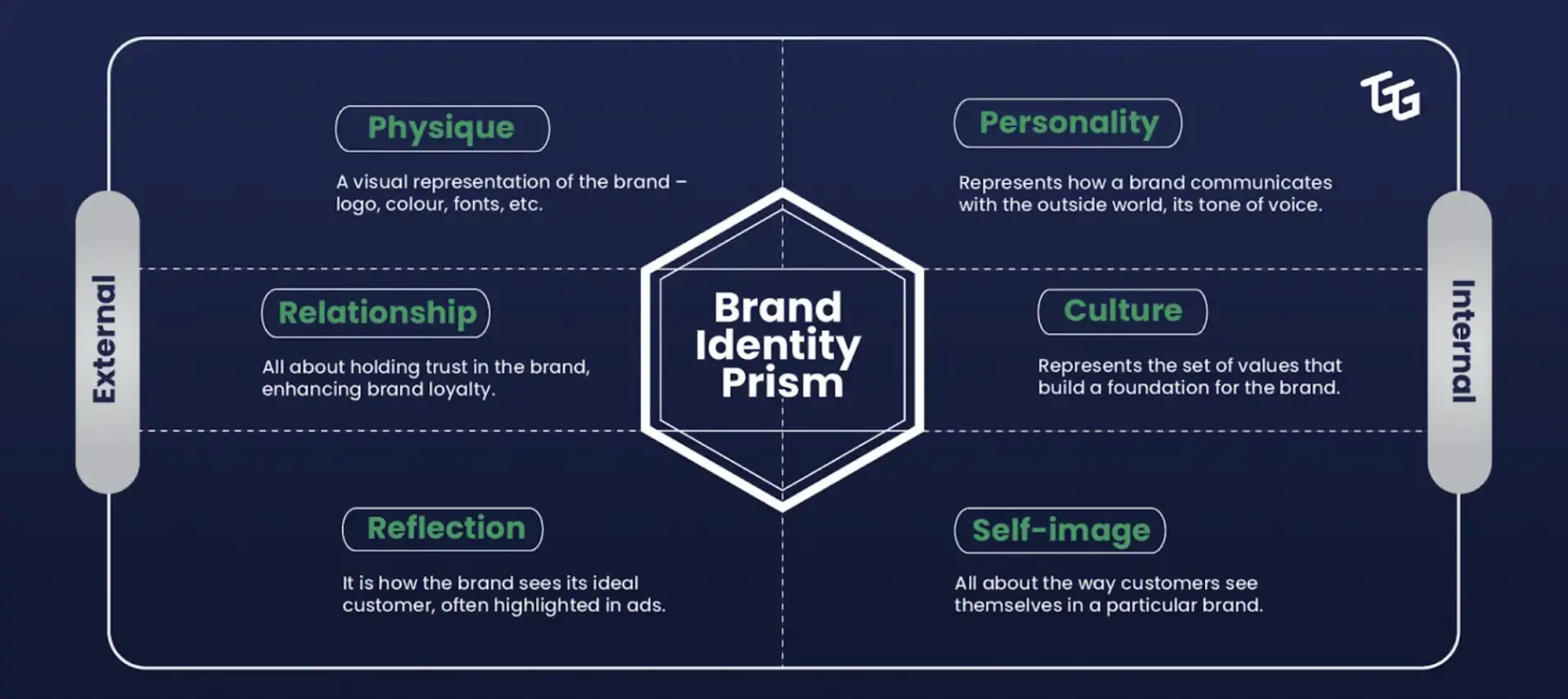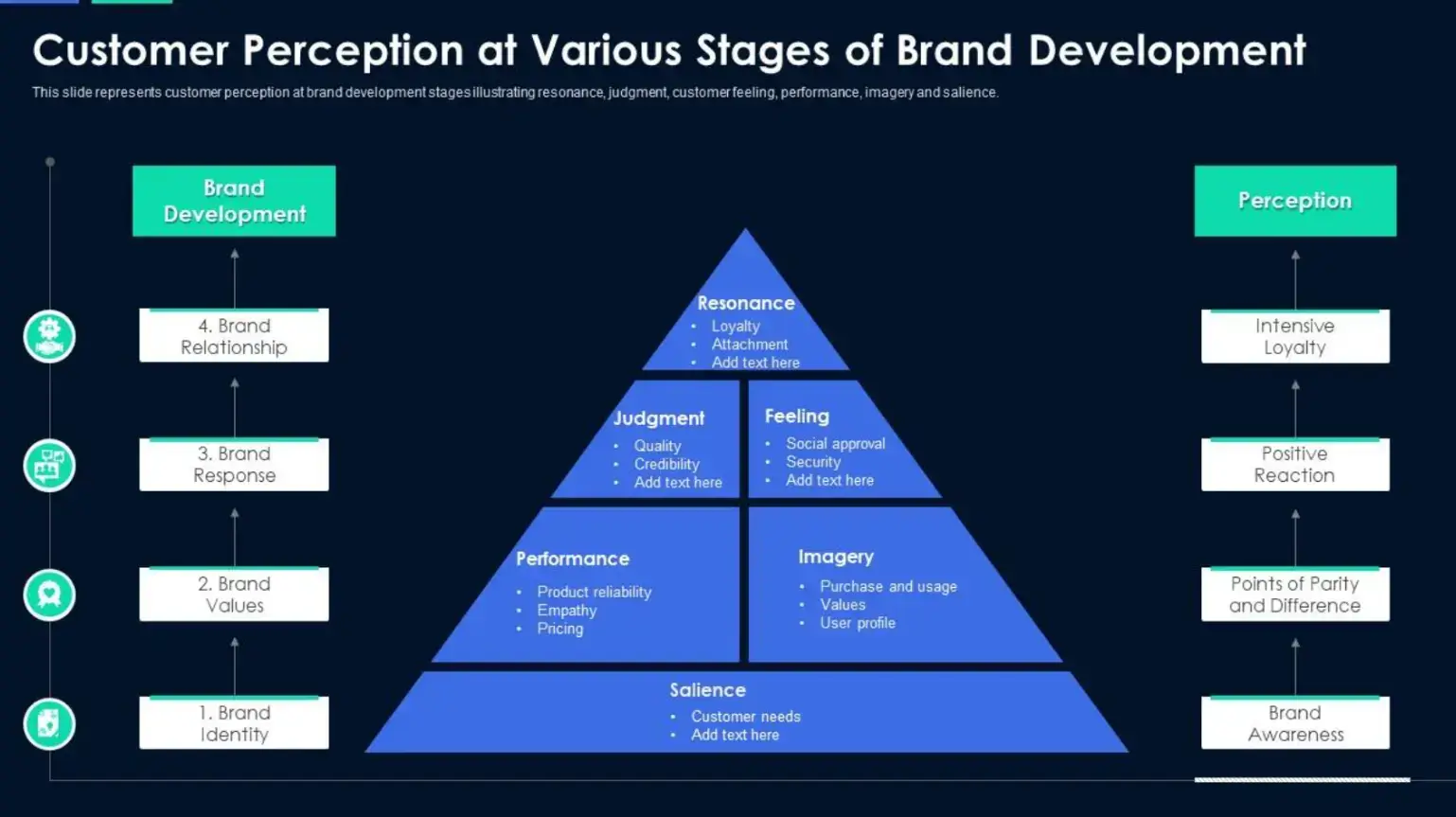Brand perception is how the public, including potential and existing customers, perceive your brand. It's what they believe your business represents, not what you say it does. In many ways, it's a silent salesperson working behind the scenes.
The data backs it up: 65% of consumers find a positive experience with a brand to be more influential than impressive advertising. In fact, brand identity is so powerful that it influences every customer interaction, playing an instrumental role in your business’s bottom line.
Article Shortcuts:

Source: The Go-To Guy
The Importance of Brand Perception
The importance of psychology in brand perception cannot be understated.
Effective brand identities go beyond selling products; they connect with customers by reflecting their desired lifestyle or positioning themselves as clear solutions to customer pain points.
A powerful identity and memorable brand name can significantly impact success, making it easier to find customers and attract investors by building a strong, lasting impression.
-
Impacts marketing efforts
A fantastic product or service that fulfills customer needs will struggle to gain traction if it has a negative connotation. That's why, in recent years, so many fossil fuel companies have shifted heavily toward promoting green initiatives.
For instance, big oil companies like Shell use green claims in 70% of their messaging (although the credibility is debatable).
The point is that while your business may not be as big or harmful, negative brand perception creates a major hurdle for marketing and customer buy-in. Today's consumers are increasingly reluctant to connect with brands detrimental to people, animals, or the environment.
-
Influences purchase decisions
Consider your buying habits. Why do you purchase certain products or services? Is it based on a friend's recommendation, a positive online review, an advertisement, or simply because you trust the brand name?
Remember, your customers don't just buy products or services; they buy into your brand.
For example, a car's brand identity greatly impacts our decision-making when it comes to purchasing a vehicle. BMW evokes a sense of social status, while Toyota and Honda are known for their reliability.
Tesla stands out for its cutting-edge technology. Beyond practical factors, such as budget and personal taste, the image a car brand projects is a significant factor in influencing purchasing choices.
-
Drives customer loyalty
Apple's brand identity is a masterclass in brand identity success. Their minimalist design, focusing on clean lines and a limited color palette, evokes feelings of simplicity, elegance, and even luxury.
This emotional connection is so strong that users don't just call their laptops "laptops," they call them "Macs," highlighting the brand's loyal following.
Even when upgrades offer minimal technical improvements, many users faithfully replace their iPhones with newer models. Such brand loyalty is further fueled by Apple's meticulously crafted ecosystem, where devices seamlessly work together, locking users into only using Apple products.

Source: SlideBazaar
How to Build a Positive Brand Identity
Brands are living entities, not stagnant logos.
They adapt and thrive by responding to current trends and customer needs. The entire customer journey shapes your brand's identity, from initial interaction to purchase and beyond.
Consistent messaging is key to a strong brand identity. This means ensuring your brand values and personality are reflected across all touchpoints, including your website, social media, sales tools, promotional materials, and every aspect of your customer experience.
-
Establish a consistent visual identity
Color is a powerful branding tool. Take a look at iconic brands like KFC and McDonald's - their red palettes are no coincidence, as red is known to stimulate appetite.
But branding is about more than just color; it's a holistic experience. Consider your color scheme, typography, and imagery across all marketing materials - how do they make customers feel?
Ensure that your visual identity effectively represents your brand's values, purpose, and USP.
For example, many financial institutions use blue to evoke feelings of calmness, reliability, and trust. If you need help creating a cohesive brand image, consider partnering with a marketing agency. They can assist you in designing your business's proper visual identity.
-
Develop a robust content marketing strategy
While advertising grabs attention, thought leadership is the engine that drives content marketing. It's a powerful brand strategy to build trust and credibility without spending a fortune.
Brands can use a business live streaming strategy for marketing content.
Here's why: When an audience perceives someone as a thought leader, they trust their expertise. This trust naturally extends to the brand they represent.
Thought leaders leverage various platforms to establish their authority.
Common strategies include contributing to insightful blog posts on relevant websites, participating in industry seminars, and actively engaging with social media following.
Perhaps you're thinking even bigger and wondering how to get a Ted Talk to share your expertise. There's no limit, so long as the knowledge you share is true and valuable to your audience.
-
Respond to customers
Gone are the days of mailing complaints or waiting on hold. Today, a negative review on Google or social media can quickly damage your reputation.
That's why proactively engaging with both positive and negative feedback is crucial. Most consumers expect a brand to respond to their online queries and complaints within 24 hours.
For small businesses, managing this constant feedback loop can be overwhelming. Let customers know when to expect a response, like "We aim to answer all inquiries within 48 hours." Remember, exceptional customer service is paramount on social media, where both praise and criticism can reach millions.

Source: Slide Team
Harnessing Your Brand Identity for Business Growth
While you can't dictate how customers perceive your brand, you can influence it. A strong brand identity, effective marketing strategies, and consistent customer engagement significantly shape public perception.
Despite its competitive nature, the online space offers powerful tools to measure and track your success. Utilize analytics to gauge how well your content resonates with your audience and how satisfied your customers are.
Remember, a continuous feedback loop is the key to a positive brand perception. By monitoring customer sentiment and marketing metrics, you can refine your approach and ensure your brand continues to resonate positively with your target audience.


